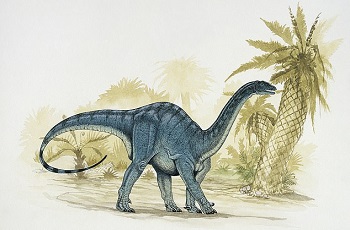An early species of dinosaur crawled on all-fours before learning to stand, much like ancient human beings.
Experts have found that the Mussaurus patagonicus – dubbed the Mouse Lizard – developed the ability to walk on two legs around 200 million years ago.
Researchers said the species, which was only hand-sized at birth, only became bipedal when it grew into adulthood and its weight of gravity shifted, according to Daily Mail.
The teams made their find after scanning key fossils from three ages – birth, toddler and adult – into 3D models, then adding physical features such as the head, neck, torso, tail and limbs.
This allowed them to see the whereabouts of the body’s centre of mass.
Dr Alejandro Otero, a researcher at Argentina’s Museo de La Plata, said: ‘Mussaurus switched from four legs as a baby to two legs by adulthood, much as humans do.
‘It is important to notice that such locomotor switching is rare in nature and the fact that we were able to recognize it in extinct forms like dinosaurs highlights the importance of our exciting findings.’
Dr Andrew Cuff, a researcher at the RVC, added: ‘Mussaurus underwent an exceptional growth sequence. They hatched at a mass similar to baby chickens, but in the next eight years became as heavy as a rhinoceros, all whilst changing from walking on four legs to walking on two.
‘It is only by using digital modelling that we have been able to gain these new insights into these long-extinct animals.’
The Mussaurus patagonicus is believed to have resided in what’s now Referred to as Patagonia, Argentina.
Dr John Hutchinson, Professor of Evolutionary Biomechanics, added: ‘We created the first 3D representation of the major changes of body form and function across the growth of a dinosaur.
‘And we were surprised to learn that enlargement of the tail and reduction of the neck had more of an effect on how Mussaurus stood than how long its forelimbs were, which is what people used to think.’
N.H.Kh

